#Steatite Ceramic Interlocking Insulating Beads
Photo
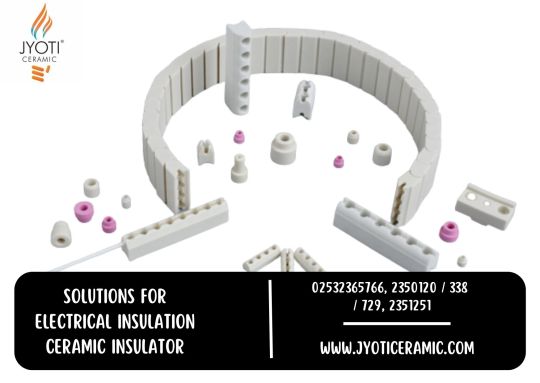
Ceramics are often good choices for heat and electrical insulation because of the electrical and thermal non-conductivity of some ceramic varieties. J
#Ceramic Band Heater Insulators#Ceramic insulator#Steatite Ceramic Interlocking Insulating Beads#Steatite Ceramic Band Heater Insulator#Cordierite Ceramic Band Heater Insulator
0 notes
Link
Ceramics are often good choices for heat and electrical insulation because of the electrical and thermal non-conductivity of some ceramic varieties.
#Ceramic Band Heater Insulators#Ceramic insulator#Steatite Ceramic Interlocking Insulating Beads#Steatite Ceramic Band Heater Insulator#Cordierite Ceramic Band Heater Insulator
0 notes
Link
Ceramics are often good choices for heat and electrical insulation because of the electrical and thermal non-conductivity of some ceramic varieties.
#Ceramic Band Heater Insulators#Ceramic insulator#Steatite Ceramic Interlocking Insulating Beads#Steatite Ceramic Band Heater Insulator#Cordierite Ceramic Band Heater Insulator
0 notes
Link
Ceramics are often good choices for heat and electrical insulation because of the electrical and thermal non-conductivity of some ceramic varieties.
#steatite ceramic interlocking insulating beads#Ceramic Band Heater Insulators#Ceramic insulator#Steatite Ceramic Band Heater Insulator#Cordierite Ceramic Band Heater Insulator
0 notes
Text
Custom Design Ceramic Insulator for Your Application
Ceramic band heater insulators
Ceramics are often good choices for heat and electrical insulation because of the electrical and thermal non-conductivity of some ceramic varieties. Jyalox ceramic stress relieving bead insulators are mechanically tough, strong and wear resistant to withstand abuse of rough handling of heater mats commonly experienced while in use in the heavy construction industry. The electrical device is in the form of a flexible heater mat, constructed with alumina ceramic interlocking beads. The electric heating elements are supported by ceramic beads which insulate the device from the structure being welded.
Jyalox Ceramic band heater insulators available for construction of stress relieving flexible electrical heater mats. Flexible electrical heating mats find the widest use in stress relieving applications, as the interlocking pattern of ceramic beads allow maximum flexibility to the mat, to cover the heating element properly from exposure to the area required to be heated up, such as concave, convex and flat surfaces of vessels, pipes etc. Several mats can be connected together to cover large surface areas of vessels, pipes etc required for stress relief treatment.
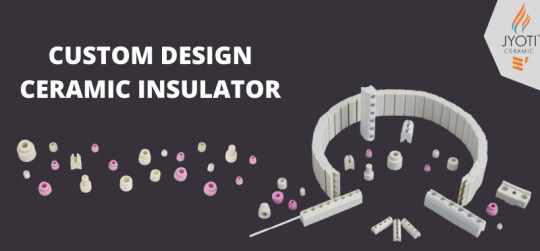
Jyalox ceramic stress relieving bead insulators are mechanically tough, strong and wear resistant to withstand abuse of rough handling of heater mats commonly experienced while in use in the heavy construction industry.
Why Ceramic band heater insulators?
Ceramic band heater insulators are fast becoming the product of choice over its glass counterparts as they possess a number of advantages such as:
Light weight
Have higher heat resistance
Possess higher thermal shock resistance
Can handle higher voltage loads
Performs better in wet conditions
More resistant to external damage from installation and shipping
More resistant to corrosion
Flexible electrical heating mats find the widest use in stress relieving applications, as the interlocking pattern of ceramic beads allow maximum flexibility to the mat, to cover the heating element properly from exposure to the area required to be heated up, such as concave, convex and flat surfaces of vessels, pipes etc. Several mats can be connected together to cover large surface areas of vessels, pipes etc required for stress relief treatment.
Our amazing team of experts is always at your services, and along with our state-of-the-art manufacturing capabilities, we can gladly assist you with any material solutions and design considerations. We manufacture Ceramic band heater insulators used for making various types of Industrial Heaters. These Insulators have equidistant holes which help in holding and passing of heating wires or elements.
Our range of Ceramic band heater insulators is renowned in the industry for its high precision and efficient performance. Ceramic band heater insulators, which we offer, have sturdy construction that enables it to have a long life. Jyoti Ceramic provides Ceramic Insulator in varied specifications in order to meet the diverse requirements of the clients.
Jyoti Ceramic Ceramic band heater insulators Supplier and Manufacturer, To get more information about our product Call Now at 02532365766, 2350120 / 338 / 729, 2351251 and visit our Website:-
https://www.visitstimes.com/custom-design-ceramic-insulator-for-your-application/
#Ceramic Band Heater Insulators#Ceramic insulator#Steatite Ceramic Interlocking Insulating Beads#Steatite Ceramic Band Heater Insulator#Cordierite Ceramic Band Heater Insulator
0 notes
Photo
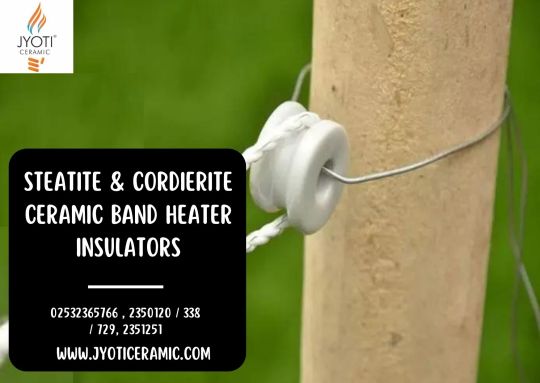
A ceramic insulator is a non-conductive insulator made of red, brown or white porous clay that provides a bridge between electronic components and has high dielectric strength and stability and low power loss.
#Ceramic Band Heater Insulators#Ceramic insulator#Steatite Ceramic Interlocking Insulating Beads#Electrical Ceramic Heater Parts#Steatite Ceramic Band Heater Insulator#Cordierite Ceramic Band Heater Insulator
0 notes
Link
A ceramic insulator is a non-conductive insulator made of red, brown or white porous clay that provides a bridge between electronic components and has high dielectric strength and stability and low power loss.
#Ceramic Band Heater Insulators#Ceramic insulator#Steatite Ceramic Interlocking Insulating Beads#Electrical Ceramic Heater Parts#Steatite Ceramic Band Heater Insulator#Cordierite Ceramic Band Heater Insulator
0 notes
Link
A ceramic insulator is a non-conductive insulator made of red, brown or white porous clay that provides a bridge between electronic components and has high dielectric strength and stability and low power loss.
#Ceramic Band Heater Insulators#Ceramic insulator#Steatite Ceramic Interlocking Insulating Beads#Electrical Ceramic Heater Parts#Steatite Ceramic Band Heater Insulator#Cordierite Ceramic Band Heater Insulator
0 notes
Text
Ceramic Insulator: Types, Uses, Features and Benefits
Introduction
A ceramic insulator is a non-conductive insulator made of red, brown or white porous clay that provides a bridge between electronic components and has high dielectric strength and stability and low power loss. They are easy to maintain and resistant to stains and various residue forms. For many years, ceramics have been used as electrical insulators because of their exceptionally high resistance to electric current.
Widespread use of Ceramic insulator began in the 1950s. They were cheaper to build, more flexible and more durable, whatever the season. Production of glass insulators ceased in the 1960s and was completely replaced by ceramic insulators in the 1970s. There are still some glass insulators in use, but only a small percentage.
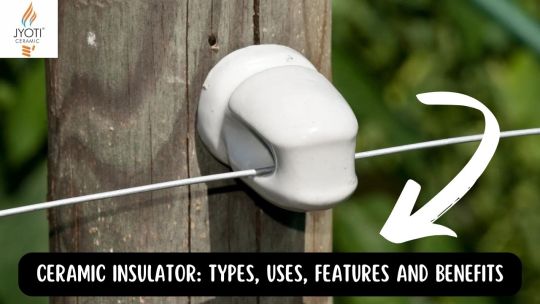
How Ceramic Insulators are Used
Ceramic insulator are found in a wide variety of electronic applications, from power distribution stations to cell phones. Ceramic materials as insulation are characterized by their non-conductivity and exceptional mechanical strength. Some examples of ceramic insulators can be found on power lines, coaxial cables, and circuit boards to prevent electromagnetic (EM) waves, fire hazards, power surges, and short circuits. The widespread use of ceramic insulators is due to their ability to retain heat. Additionally, it is easy to fabricate and shape into various configurations. In many applications, they are central components of power control.
Uses for Ceramic Insulators
Wire Support
Ceramic insulators are used to support wires on utility or telephone poles. Wire support ceramic insulators have an umbrella-like structure that protects the wire and the underside of the insulator from rain or snow. Ceramic wire support insulators are the oldest type of ceramic insulators because of their ability to withstand and withstand harsh weather conditions.
Mechanical Tension
Mechanical stress ceramic insulators are designed for use in situations where a suspended wire or cable pulls on the insulator. Like support ceramic insulators, they are used with overhead wires and radio antennas and power lines. They can be placed between two power lines to isolate them. Mechanical stress Ceramic insulator are suitable for keeping wires tight and straight.
Pole
A pole ceramic insulator consists of a spool of insulator attached to a bracket, which is connected to the top and bottom of the spool by a short rod that passes through the center of the insulator. They are attached to walls, columns, vertices or surfaces by means of bolts in the center of the bracket. When the angle of the connecting line changes, the pole ceramic insulator adjusts and adapts to the change.
Benefits of Ceramic and Porcelain Insulators
Jyoti Ceramic Ceramic and porcelain insulators are designed to keep electrified wires close to the fence without losing power through the post. They have better insulating properties than plastic insulators and will not break down due to sun damage. When installed correctly, these insulators will support your fence for years. Available for in-line and corner posts, porcelain and ceramic insulators can handle any size fence wire, including high tensile wire, poly wire and polyrope.
Many insulators also have built-in lag screws that allow you to quickly install them onto your existing wooden fence posts. Once they're screwed in place, simply thread your line through their ends for a secure hold.
Call us: 02532365766 , 2350120 / 338 / 729, 2351251
More about information for Ceramic insulator then Visit our site -
https://www.jyoticeramic.com/electric-heater.php
#Ceramic Band Heater Insulators#Ceramic insulator#Steatite Ceramic Interlocking Insulating Beads#Electrical Ceramic Heater Parts
0 notes
Photo
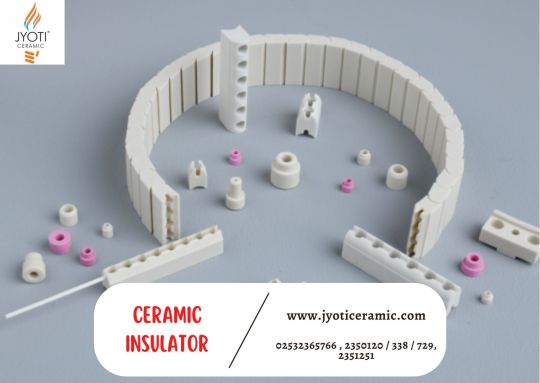
A multi-chapter guide describing ceramic insulator: types of ceramic insulators, how to choose ceramic insulators, custom designs, how they are made, uses and applications.
#Ceramic Band Heater Insulators#Ceramic insulator#Steatite Ceramic Interlocking Insulating Beads#Electrical Ceramic Heater Parts#Steatite Ceramic Band Heater Insulator#Cordierite Ceramic Band Heater Insulator
0 notes
Link
A multi-chapter guide describing ceramic insulator: types of ceramic insulators, how to choose ceramic insulators, custom designs, how they are made, uses and applications.
#Ceramic Band Heater Insulators#Ceramic insulator#Steatite Ceramic Interlocking Insulating Beads#Electrical Ceramic Heater Parts#Steatite Ceramic Band Heater Insulator#Cordierite Ceramic Band Heater Insulator
0 notes
Link
A multi-chapter guide describing ceramic insulator: types of ceramic insulators, how to choose ceramic insulators, custom designs, how they are made, uses and applications.
#Ceramic insulator#Ceramic Band Heater Insulators#Electrical Ceramic Heater Parts#Steatite Ceramic Interlocking Insulating Beads#Steatite Ceramic Band Heater Insulator
0 notes
Text
Jyoti Ceramic is a ceramic insulator Manufacturer in Nashik
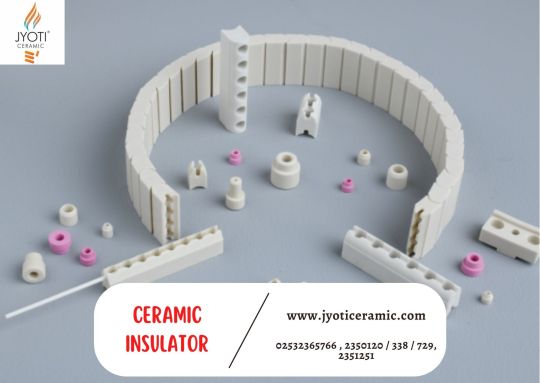
A multi-chapter guide describing ceramic insulator: types of ceramic insulators, how to choose ceramic insulators, custom designs, how they are made, uses and applications.
Ceramic Schulter can find a wide variety of applications from power distribution stations to cell phone sales. Materials such as ceramics as insulation are characterized by their non-conductivity and general strength.
A ceramic insulator is a non-conductive insulator made of red, brown or white porous clay that provides a bridge between electronic components and has high dielectric strength and stability and low power loss. Jyoti Ceramic is a top ceramic insulator Manufacturer and Supplier in Nashik. If you need more information about ceramic insulator contact us or visit the official website.
Call us: 02532365766 , 2350120 / 338 / 729, 2351251
More about information for Ceramic Insulator then Visit our site -
https://www.jyoticeramic.com/electric-heater.php
#Ceramic Band Heater Insulators#Ceramic insulator#Steatite Ceramic Interlocking Insulating Beads#Electrical Ceramic Heater Parts#Steatite Ceramic Band Heater Insulator#Cordierite Ceramic Band Heater Insulator
0 notes
Text
What is a Ceramic Insulator? Used and Types
A multi-chapter guide describing ceramic insulator: types of ceramic insulators, how to choose ceramic insulators, custom designs, how they are made, uses and applications.
What is a Ceramic Insulator?
A ceramic insulator is a non-conductive insulator made of red, brown or white porous clay that provides a bridge between electronic components and has high dielectric strength and stability and low power loss.
They are easy to maintain and resistant to stains and various residue forms. For many years, ceramics have been used as electrical insulators because of their exceptionally high resistance to electric current.

Widespread use of ceramic insulator began in the 1950s. This product was cheaper, more flexible and more durable, whatever the weather. Production of glass insulators ceased in the 1960s and was completely replaced by ceramic insulators in the 1970s. There are still some glass insulators in use, but only a small percentage.
How Ceramic Insulators are Used
Ceramic Schulter can find a wide variety of applications from power distribution stations to cell phone sales. Materials such as ceramics as insulation are characterized by their non-conductivity and general strength.
Uses for Ceramic Insulators
Wire Support
Ceramic Insulator are used to support wires on utility or telephone poles. Wire support ceramic insulators have an umbrella-like structure that protects the wire and the underside of the insulator from rain or snow. Ceramic wire support insulators are the oldest type of ceramic insulators because of their ability to withstand and withstand harsh weather conditions.
Mechanical Tension
Mechanical stress ceramic insulators are designed for use in situations where a suspended wire or cable pulls on the insulator. Like support ceramic insulators, they are used with overhead wires and radio antennas and power lines. They can be placed between two power lines to isolate them. Mechanical stress Ceramic insulators are suitable for keeping wires tight and straight.
Pole
A pole ceramic insulator consists of a spool insulator attached to a bracket, which is connected to the top and bottom of the spool by a short rod passing through the middle of the insulator. They are attached to walls, columns, corners or surfaces by means of bolts in the center of the bracket. When the angle of the connecting line changes, the pole ceramic insulator adjusts and adapts to the change.
Types of Ceramic Insulators
The many uses of Ceramic Insulator make it imperative for engineers to design and develop ceramic insulator configurations that can fit a wide range of applications. Although ceramic insulators have many uses, the number of types falls into a few basic categories.
Ceramic Corner Post
Corner post ceramic insulators are designed to withstand the stress of fence anchor points or fence lines that change direction. They are also used as fence line termination points. Corner post ceramic insulators come in various shapes and sizes to suit application requirements and can be machined for wire laying.
Ceramic Strain Insulators
Strain ceramic insulators are designed to withstand the strain of suspended electrical wires or cables. They are used to support overhead antennas and power lines where there is mechanical stress. Strain ceramic insulators are placed along the length of the wires so that they are isolated on poles or towers.
The space between the shape elements of strainermic insulators and the load-bearing transfer capacity of the inter. For radio antennas and power lines, tension ceramic insulators withstand the physical strain of wires.
Dog Bone Ceramic Insulators
Dog bone ceramic insulators are strain insulators used for mounting electrical wires and insulating antenna wires. They have a ribbed construction to reduce radio frequency leakage. A dog bone ceramic insulator has a body two to three inches long and has vertical holes at both ends. The ribbing is placed in the holes as seen in the image below.
A variety of materials are used to manufacture dog bone insulators. Ceramic is chosen for its durability and long-term use, eliminating the need for frequent replacement.
Call us: 02532365766 , 2350120 / 338 / 729, 2351251
More about information for Ceramic Insulator then Visit our site -
https://www.jyoticeramic.com/electric-heater.php
#Ceramic Band Heater Insulators#Ceramic insulator#Steatite Ceramic Interlocking Insulating Beads#Electrical Ceramic Heater Parts#Steatite Ceramic Band Heater Insulator#Cordierite Ceramic Band Heater Insulator
0 notes
Photo
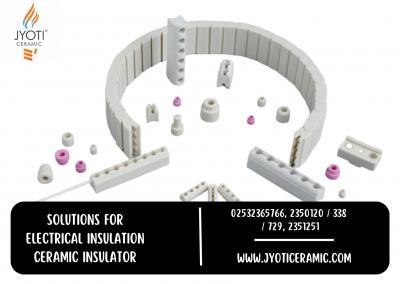
Ceramic Band Heater Insulators
Ceramic insulator
Steatite Ceramic Interlocking Insulating Beads
Steatite Ceramic Band Heater Insulator
Cordierite Ceramic Band Heater Insulator
0 notes
Photo
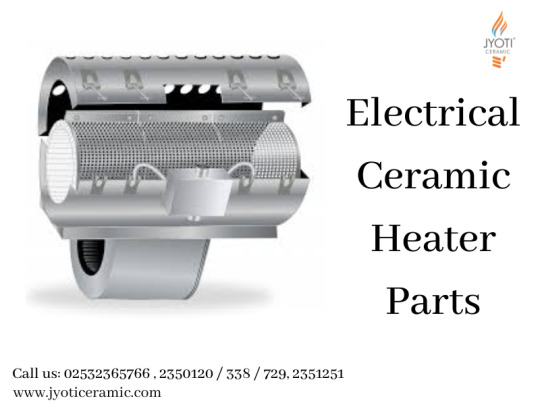
The range of ceramic heater parts produced at Jyoti are Jyalox 95P End Sealing Beads, Steatite and Cordierite Ceramic Band Heater Insulators with single and multibore for manufacture of Electrical Band Heaters for plastic injection moulding machines, Steatite Ceramic Interlocking type Insulating Beads in various shapes and sizes and Steatite End Sealing Beads for sealing the ends of tubular type electrical heaters.
0 notes